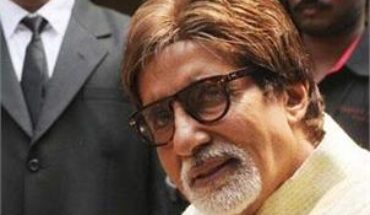An 11-year-old boy from Yemen and a 34-year-old software engineer from Bengaluru, both suffered from end-stage kidney disease
Bengaluru: Fortis Hospital Bannerghatta Road recently achieved a significant clinical feat by successfully completing complex Robotic Kidney Transplant Surgeries for end-stage kidney disease. The surgeries were performed on two patients: an 11-year-old boy from Yemen and a 34-year-old man from Bengaluru. Both individuals underwent live related kidney transplant surgeries, with their aunt and father respectively serving as donors. Spearheaded by Dr. Mohan Keshavamurthy, Senior Director of Urology, Uro-Oncology, Uro-Gynaecology, Andrology, Transplant, and Robotic Surgery at Fortis Hospitals Bengaluru, and Dr. Manjunath S, Consultant-Nephrology at Fortis Hospital, Bannerghatta Road, a multidisciplinary team of doctors carried out these transformative procedures, offering renewed hope to patients grappling with end-stage kidney disease.
11-year-old Ahmed, from Yemen, a known case of Steroid Resistant Nephrotic Syndrome (SRNS) was admitted to Fortis Hospital Bannerghatta Road with stage five chronic kidney disease. Nephrotic syndrome is a kidney disorder characterized by the presence of protein in the urine, low levels of protein in the blood, high cholesterol, and swelling. In SRNS, the kidneys continue to leak large amounts of protein into the urine despite treatment with steroids. This resistance to steroids can lead to persistent or recurrent nephrotic syndrome and may progress to chronic kidney disease over time.
Having had SRNS since the age of four which led to end stage kidney disease, Ahmed’s parents were unable to serve as donors due to medical complications. However, in a heart-warming gesture, Ahmed’s aunt came forward to donate her kidney. Following a comprehensive evaluation, the surgical team performed a Robot-assisted Laparoscopic Live Related Renal Transplant Surgery. This minimally invasive procedure involved transplanting the healthy kidney from Ahmed’s aunt to him. Additionally, ureteral stenting (also known as double J stent) was done wherein a thin, flexible plastic tube was placed temporarily in the ureter to help urine pass from the kidney into the bladder. Ahmed was discharged just five days post-surgery, marking a successful procedure and a newfound hope for his health.
Chetan, a 34-year-old software engineer from Bengaluru, with a history of hypertension, was diagnosed with Solitary Kidney, a condition where an individual has a single kidney instead of two. Over time, his kidney deteriorated, leading to End Stage Kidney Disease. In a remarkable act of love, Chetan’s 74-year-old father, despite concerns related to age, volunteered to donate his kidney. After undergoing two weeks of dialysis, Chetan underwent a Robot-assisted Laparoscopic Live-Related Renal Transplant surgery, followed by ureteral stenting. Remarkably, Chetan was discharged just five days after the successful surgery, marking a significant milestone in his journey towards recovery.
Explaining the procedure and the significance of robot-aided surgery, Dr. Mohan Keshavamurthy, Senior Director – Urology, Uro-Oncology, Uro-Gynaecology, Andrology, Transplant, and Robotic Surgery at Fortis Hospitals, Bengaluru, said, “Our primary goal is always the well-being and successful outcomes of our patients. In cases like those of Ahmed and Chetan, where precision and minimizing risks are paramount, we opt for robotic surgery. This approach allows for smaller, more precise incisions, reducing trauma to surrounding tissues and facilitating faster recovery times, all of which are crucial in renal transplantation. Robot-aided surgeries have enhanced visualization, and that ensures meticulous dissection and graft placement, particularly beneficial in cases with donors having unique medical histories. Moreover, the benefit of smaller incisions leads to minimal scarring and improved patient satisfaction, ultimately revolutionizing surgical techniques and enhancing the overall patient experience. This technique also fosters confidence and optimism in the recovery journey of patients.”






